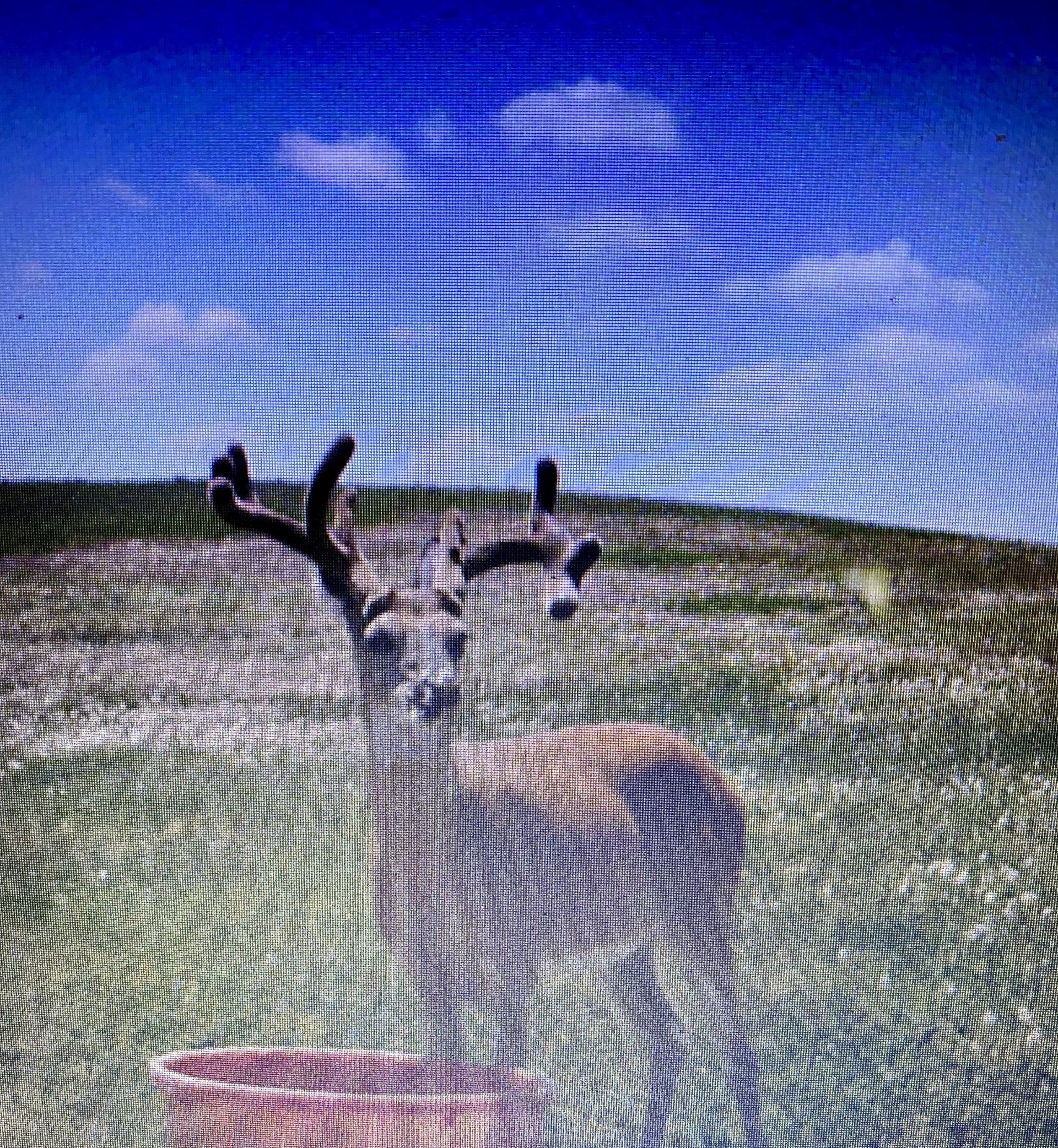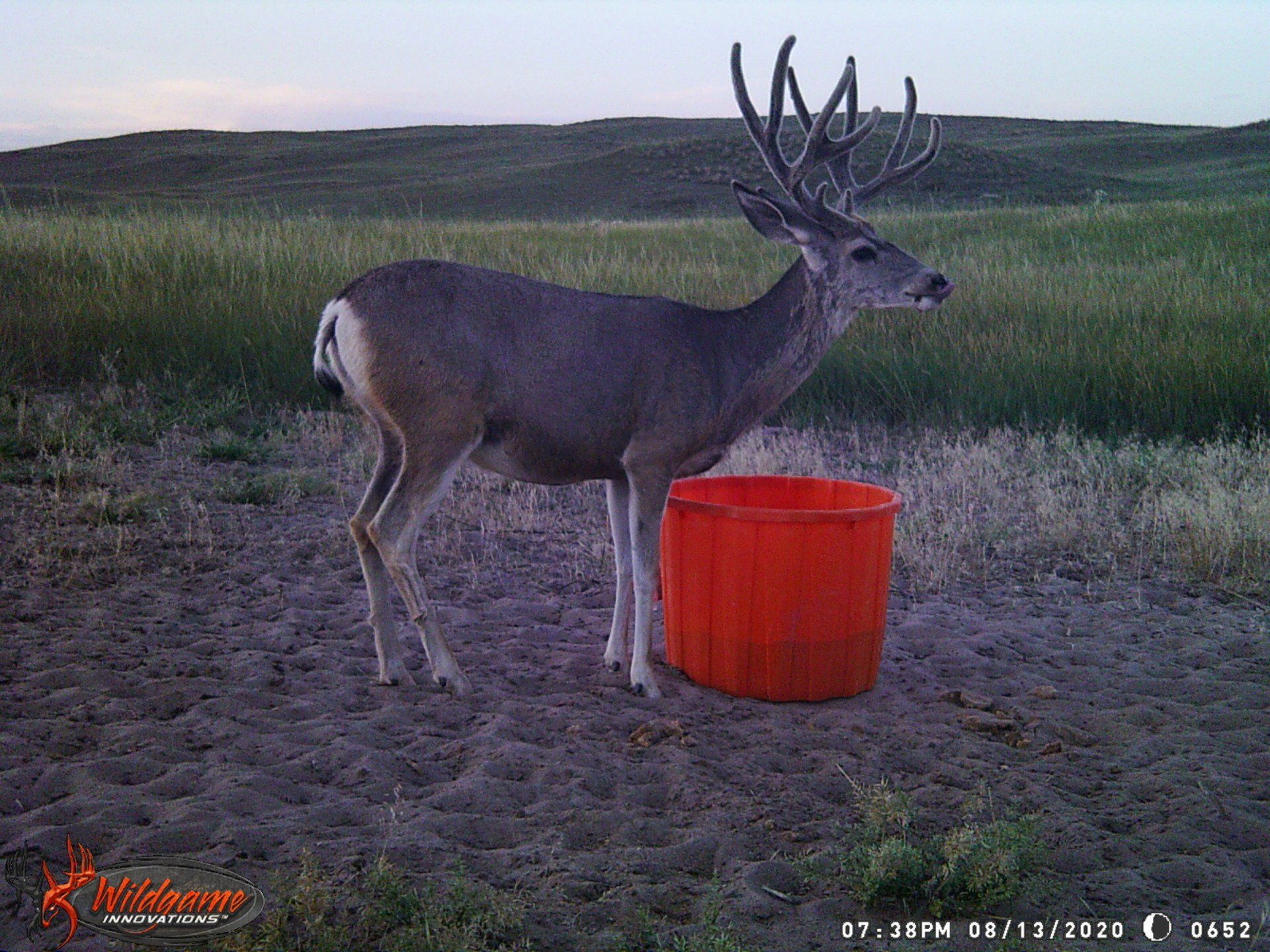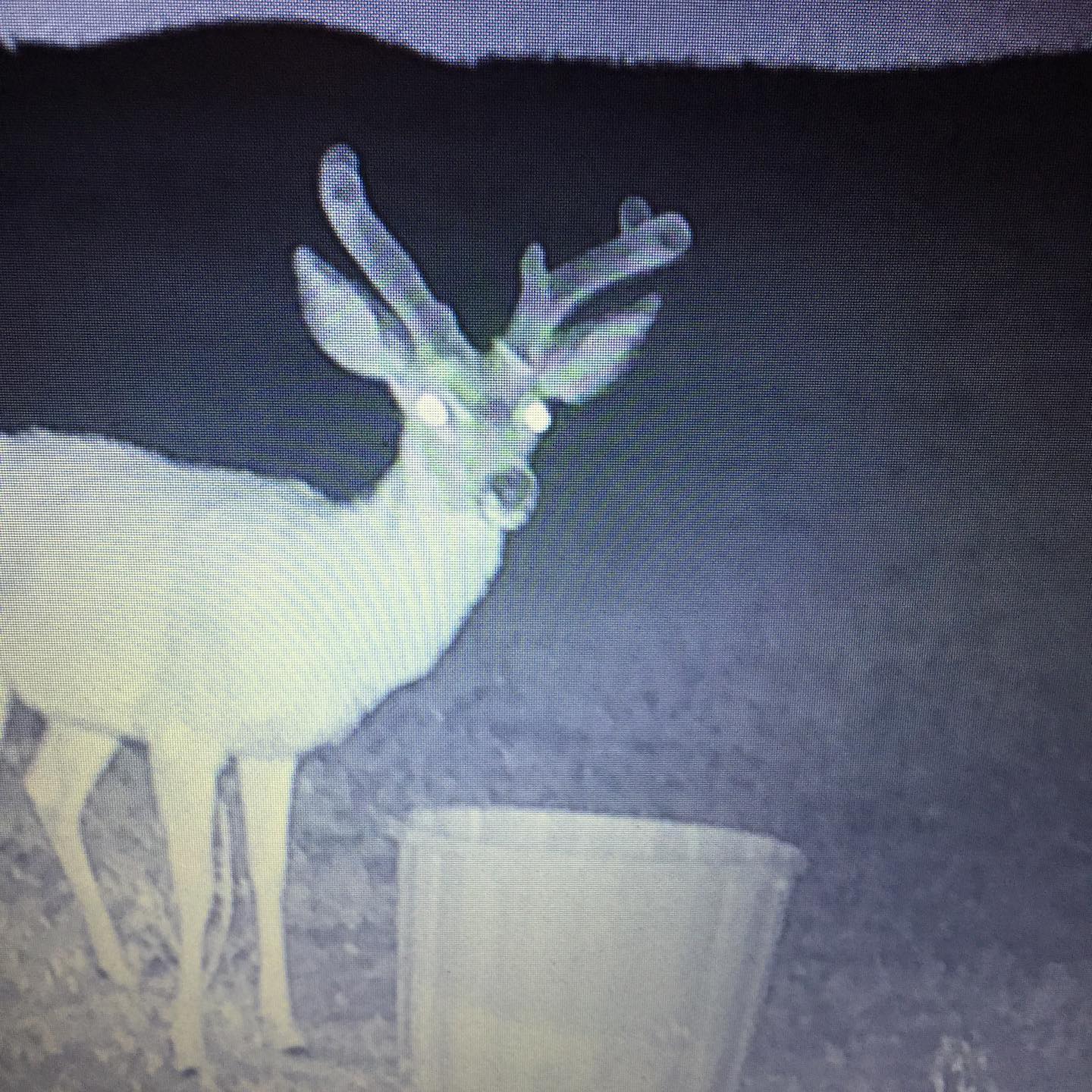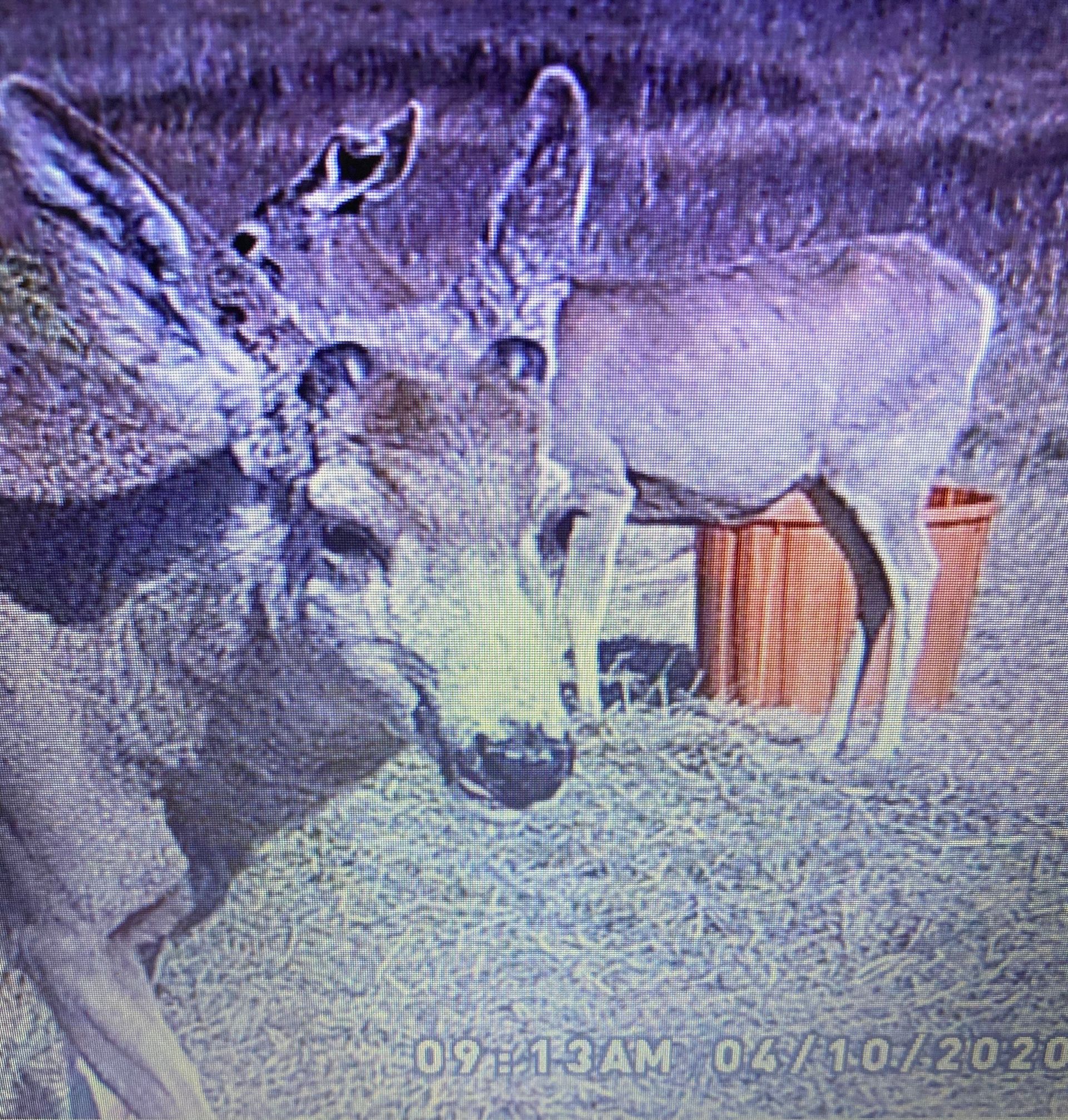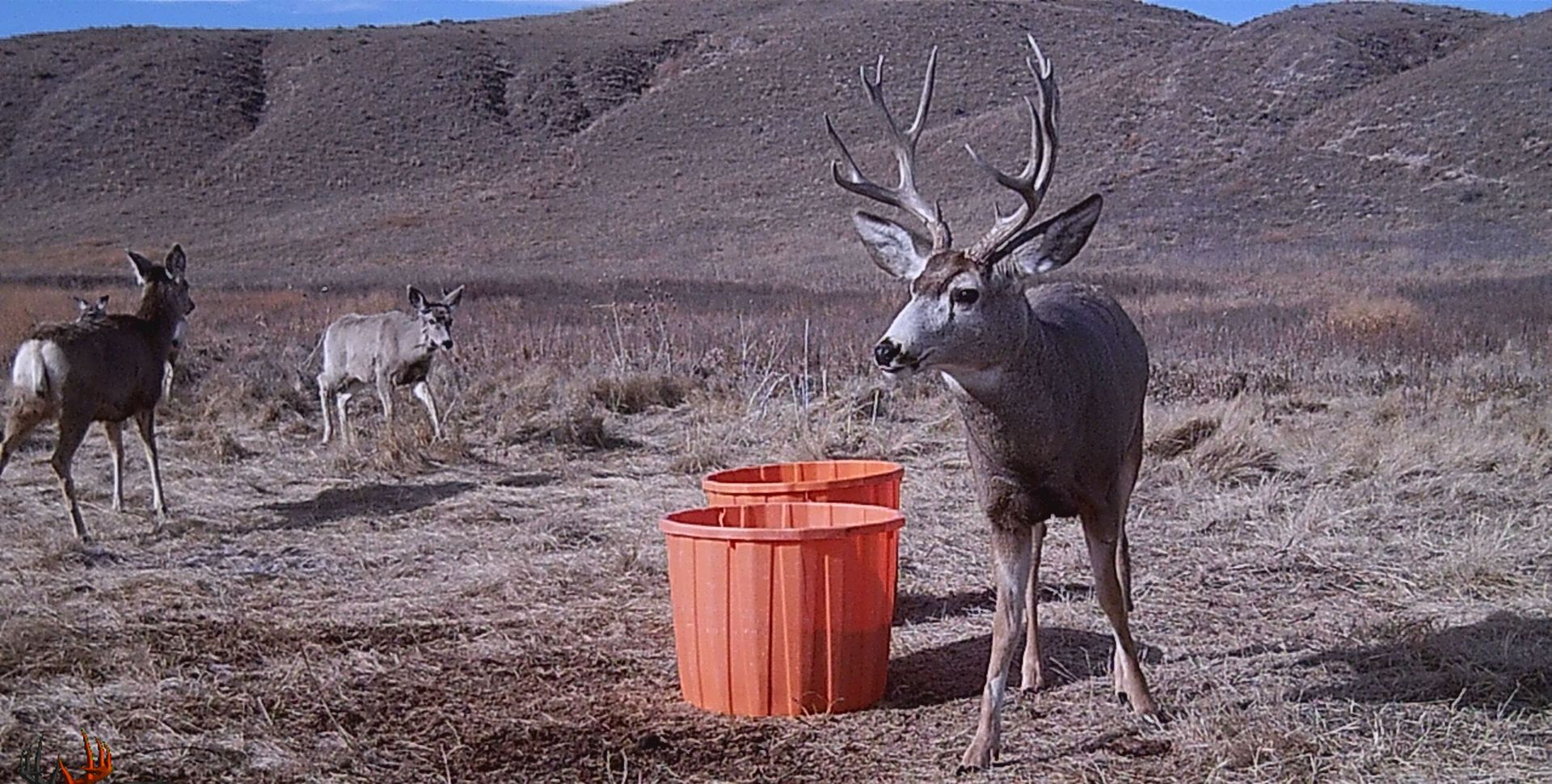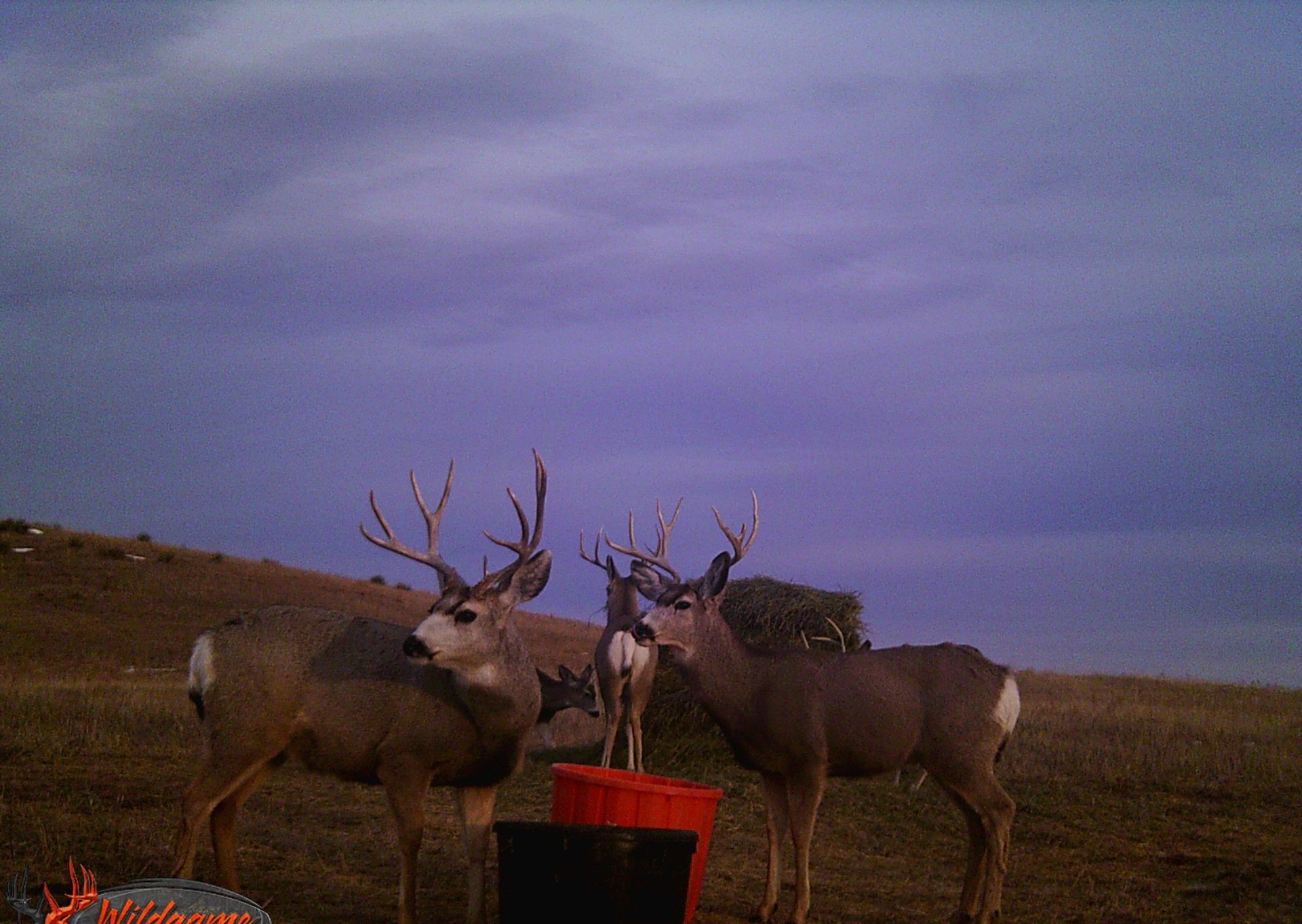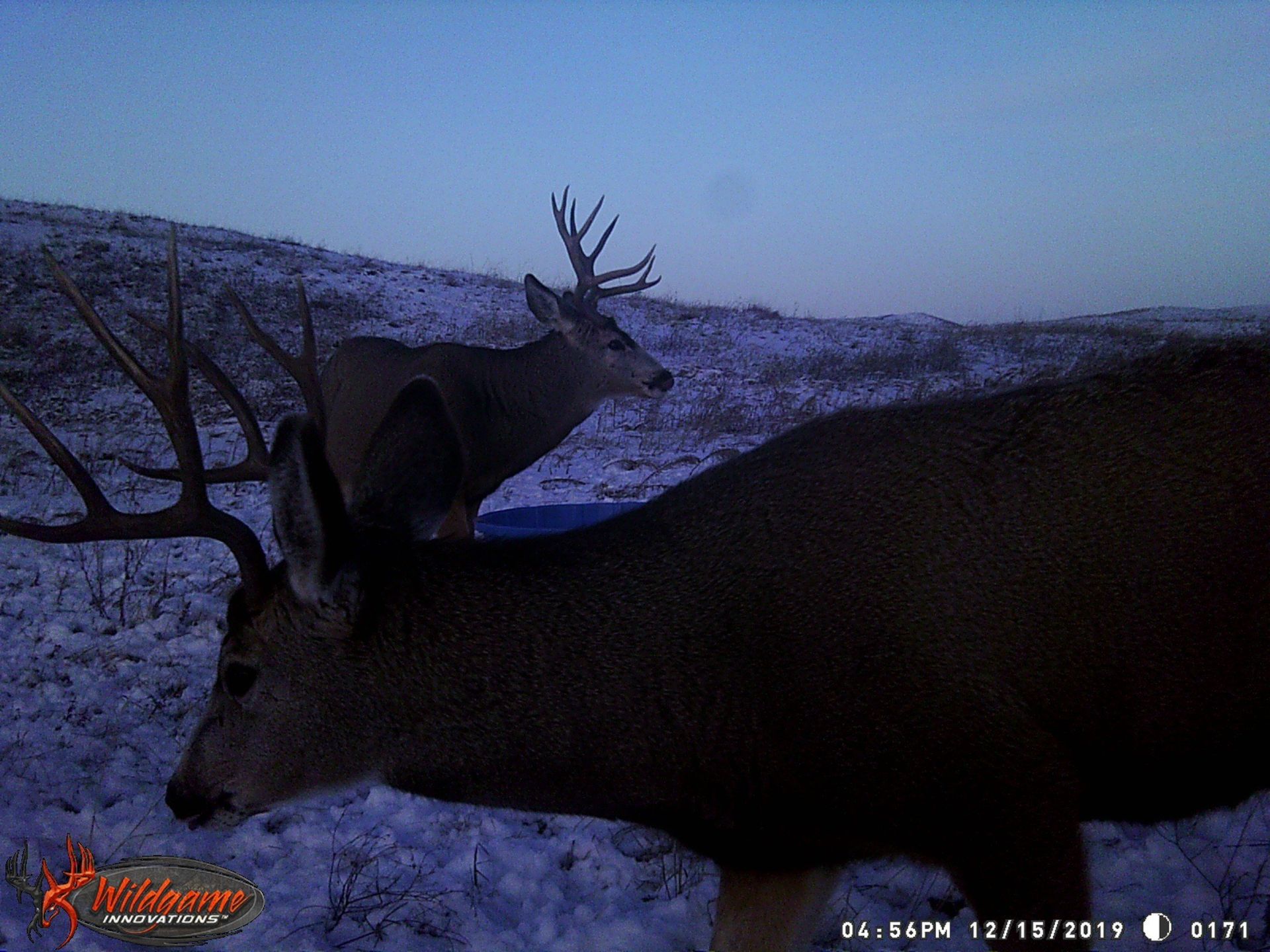Nutrition in the off-season
Herd health in the winter months
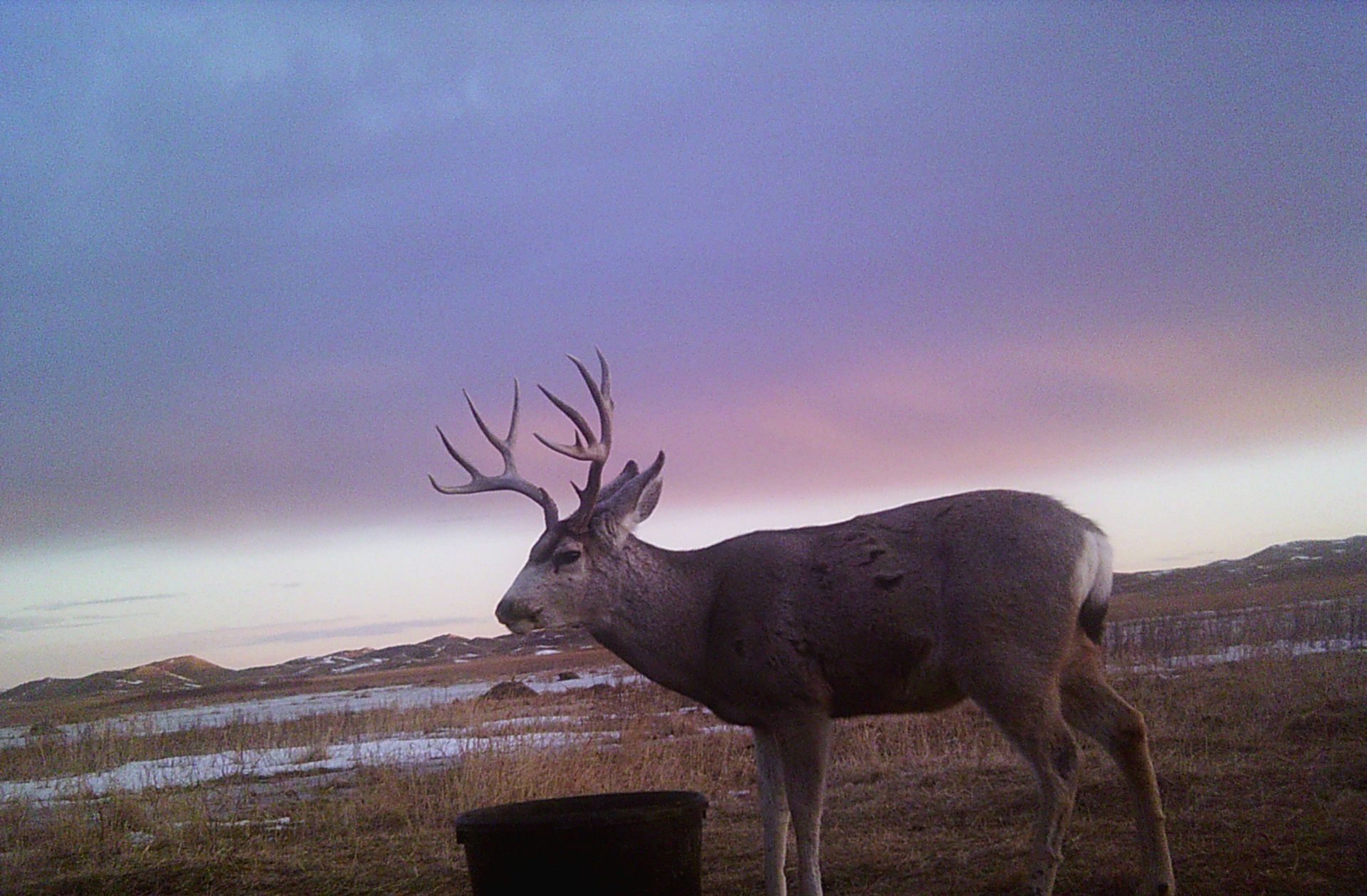
With winter in full swing, keeping an eye on the whole deer herd is vital to their survival. We don't want the deer herds to rely entirely on our protein, but use it to help them make it through the tough times when the snow is a foot deep or when the temps dip well below zero. The does also rely on the extra protein to help them to support the fawns that are growing inside of them. With the cold and snowy winters the protein adds the extra layer of protection needed to fight off any disease or minimize the winter kill . The deer food source is also limited to the areas that haven' t been grazed too hard during the summer months. With an increasing water level, the mule deer as well as the whitetail deer are forced to higher ground. In some cases the deer are moving out of the lower portions and living in the hills to escape the rising aquifer. The mule deer diet is a big variety of plants and vegetation as well as a need to roam a huge area unlike the whitetail deer. The predators also play a huge part of the mule deer range and the stress that comes with the everyday survival. The ability to thin down the coyotes is very important as the coyotes in packs can and will devour a deer a night. When you start doing the math on how many deer they consume that might be part of the answer as to why you are not having the deer numbers at home that you used to have. The mule deer are usually a very healthy animal, but sometimes they just need a little boost to help make it through the winter. Shed season will soon be upon us so stay tuned to my next blog for tips on where to look and where not to waste your time.
